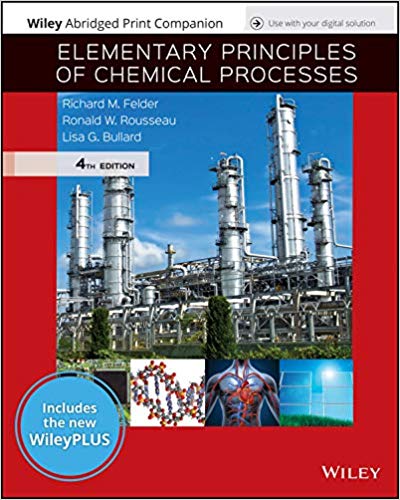Question
Describe the process of atmospheric distillation in crude oil refining and explain its significance in the overall refining operation. Discuss the importance of heat transfer
Describe the process of atmospheric distillation in crude oil refining and explain its significance in the overall refining operation. Discuss the importance of heat transfer in maintaining the temperature profile in the atmospheric distillation tower. How does efficient heat transfer contribute to separation efficiency and product yield? Explain the role of trays or plates in the distillation tower during the atmospheric distillation process. How do they aid in the separation of different components of crude oil? Describe the desalting process in crude oil refining. What impurities are removed during desalting, and why is it important to remove them before the crude oil enters the distillation tower? Discuss the factors that need to be carefully controlled and optimized during atmospheric distillation, such as temperature, pressure, feed rate, tray spacing, and reflux ratio. Explain the impact of these factors on separation efficiency and product quality.
A petrochemical company is planning to implement vacuum fractional distillation for separating crude oil into various components. Outline the key steps involved in the vacuum fractional distillation process, including the role of each component and the factors that should be considered for optimal separation.
A distillation column used in vacuum fractional distillation is experiencing a decrease in separation efficiency. Identify and explain three potential causes for this decrease in efficiency, considering factors such as vacuum pressure, temperature control, packing material, and column fouling.
During a vacuum fractional distillation process, the distillation column experiences a vacuum leak. Explain the potential consequences of a vacuum leak on the distillation process and the overall efficiency. Discuss the measures that can be taken to identify and resolve vacuum leaks in the distillation system.
A refinery is considering implementing vacuum fractional distillation as a means to increase its production of middle distillate products. Evaluate the advantages and disadvantages of using heavy vacuum gas oil (HVGO) as a feedstock for the production of middle distillates, such as jet fuel and high-quality diesel fuel. Consider factors such as boiling range, density, and further processing requirements.
Explain the importance of catalytic reforming in the petroleum industry and its role in the production of high-octane gasoline. Discuss why high-octane gasoline is in high demand by consumers and required by regulations in many countries.
Discuss the key steps involved in the catalytic reforming process, including the role of the catalyst, reactor, heat exchangers, and fractionation unit. Explain how these components work together to convert low-octane naphtha into high-octane gasoline blending components and hydrogen gas.
Evaluate the different types of catalysts used in catalytic reforming, including platinum-based catalysts, platinum-rhenium catalysts, bifunctional catalysts, and modified zeolite catalysts. Compare their advantages, selectivity, and performance characteristics in the reforming process.
Explain the importance of optimizing operating conditions and parameters in catalytic reforming. Discuss the significance of temperature, pressure, hydrogen to feedstock ratio, space velocity, and catalyst type and loading in achieving the desired product specifications and maximizing yield and selectivity.
Step by Step Solution
There are 3 Steps involved in it
Step: 1

Get Instant Access to Expert-Tailored Solutions
See step-by-step solutions with expert insights and AI powered tools for academic success
Step: 2

Step: 3

Ace Your Homework with AI
Get the answers you need in no time with our AI-driven, step-by-step assistance
Get Started


